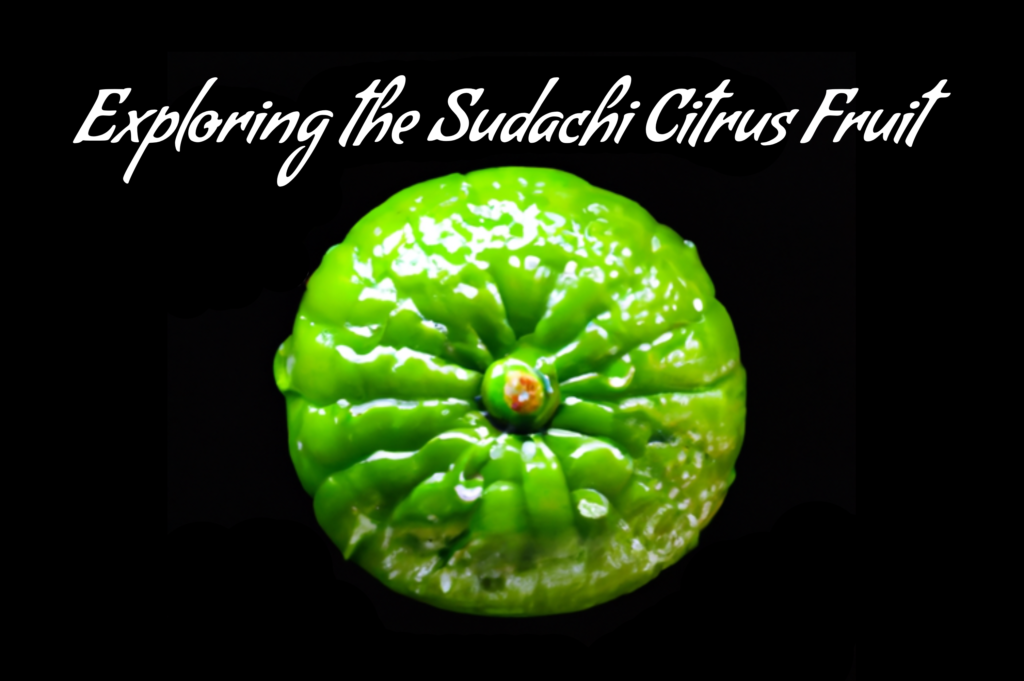Welcome! In this article, we will be exploring the delicious and refreshing Sudachi citrus fruit. Get ready to learn all about this unique fruit and how it can enhance your culinary adventures. From its origins in Japan to its tangy flavor, you will discover everything there is to know about this fruit.
Firstly, let’s dive into the origins of Sudachi. This small green fruit is native to Japan and is primarily grown in the Tokushima Prefecture. Known for its intense tartness, it adds a burst of flavor to many traditional Japanese dishes. Not only is it a culinary staple in Japan, but it has also gained popularity worldwide for its unique taste and versatility in various cuisines. So, get ready to immerse yourself in the world of Sudachi and discover how you can incorporate this vibrant fruit into your culinary creations.
Exploring the Sudachi Citrus Fruit

Overview
What is Sudachi?
Sudachi is a small green citrus fruit that originated in Japan. It is a member of the Rutaceae family and is closely related to other Japanese citrus fruits such as yuzu and kabosu. Its known for its tart and refreshing flavor, which makes it a popular ingredient in Japanese cuisine and cocktails.
History of Sudachi
Sudachi has a long history in Japan, dating back to the 16th century. It is believed to have originated in the Tokushima Prefecture, located on the island of Shikoku. Over the years, cultivation has spread to other regions of Japan, but it remains most closely associated with Tokushima.
Cultivation of Sudachi
Sudachi trees are typically small and reach a height of around 2-3 meters. They thrive in warm and humid climates, making the Tokushima Prefecture an ideal location for cultivation. The fruit is typically harvested in late summer or early autumn when it has reached its full maturity.
Characteristics
Appearance of Sudachi
Sudachi is a small citrus fruit, roughly the size of a golf ball. It has a thin, bumpy skin that is bright green in color. The flesh of the fruit is pale green and is segmented into small sections. The fruit is known for its vibrant color and unique shape, making it visually appealing.
Flavor profile of Sudachi
The flavor is tart and acidic, similar to a lime or lemon. It has a distinct citrusy aroma that is both refreshing and invigorating. The juice of it is highly acidic and has a tangy, zesty taste that adds a burst of flavor to various dishes and drinks.
Uses of Sudachi
A versatile fruit that can be used in a variety of ways. It is commonly used as a garnish in Japanese cuisine, adding a pop of color and a tangy flavor to dishes such as sushi, sashimi, and tempura. Sudachi juice is also a popular ingredient in sauces, dressings, and marinades. In addition to its culinary uses, its also used in the production of cosmetics and essential oils.
Culinary Uses
Sudachi in Japanese Cuisine
This fruit is an essential ingredient in many traditional Japanese dishes. Its tart flavor complements the richness of seafood dishes, making it a popular choice for garnishing sushi and sashimi. The juice of it is often squeezed over grilled fish to enhance its flavor and cut through any greasiness. Sudachi zest is also used to add a touch of citrus to soups, broths, and sauces.
Sudachi in Cocktails
This fruit Sudachi is a favorite ingredient in Japanese cocktails, adding a refreshing and tangy twist to classic drinks. Its juice is often mixed with shochu, a traditional Japanese distilled spirit, to create a sudachi sour. Its also used in various refreshing cocktails such as mojitos, margaritas, and daiquiris.
Sudachi in Desserts
Despite its tartness, it can also be used in sweet desserts. Its unique flavor pairs well with creamy and sweet ingredients, making it a popular choice for ice creams, sorbets, and jellies. Its also used to flavor cakes, tarts, and custards, adding a bright and citrusy note to the final dish.

Health Benefits
Rich in Vitamin C
Sudachi is a rich source of vitamin C, which is essential for maintaining a healthy immune system. Vitamin C is also a powerful antioxidant that helps protect the body against oxidative stress and cell damage. Consuming it can help boost your overall vitamin C intake and support your immune health.
Antioxidant Properties of Sudachi
In addition to vitamin C, it contains other antioxidants such as limonin and limonoids. These compounds help neutralize free radicals in the body, reducing the risk of chronic diseases and promoting overall health. Regular consumption of it may contribute to better cardiovascular health and a lower risk of certain cancers.
Digestive Aid
Sudachi contains natural enzymes that aid in digestion. These enzymes help break down food and improve nutrient absorption. Sudachi juice is often consumed in Japan as a digestive aid, especially after a heavy meal or to relieve indigestion.
Regional Significance
Sudachi in Tokushima Prefecture
This fruit has strong regional significance in the Tokushima Prefecture, where it is deeply ingrained in the local culture. The prefecture holds an annual Sudachi Festival to celebrate the fruit and its importance to the region. The festival showcases various Sudachi-based dishes, products, and performances.
Traditional Festivals Celebrating Sudachi
Apart from the Sudachi Festival, its also celebrated in other traditional Japanese festivals. One such festival is the Awa Odori, a renowned dance festival held in Tokushima every summer. Its commonly used as a motif in the festival’s songs, dances, and costumes, symbolizing the vibrant culture of the region.
Harvesting and Storage
When to Harvest Sudachi
Its typically harvested in late summer or early autumn when it has reached its peak ripeness. The fruit should have a bright green color and feel slightly soft when gently squeezed. Overripe Sudachi may have a duller color and a mushy texture, while underripe fruit will be harder and less flavorful.
Proper Storage of Sudachi
To prolong the shelf life of this fruit, it is best stored in a cool and dry place. The fruit can be kept at room temperature for a few days but should be refrigerated for longer storage. When refrigerated, it can last for up to two weeks. It is recommended to keep the fruit in a perforated bag or container to maintain its freshness.
Sudachi Varieties
Different Types of Sudachi
There are different varieties of Sudachi, each with its own unique characteristics. The two main varieties are honkan sudachi and shima-sudachi. Honkan sudachi is larger and more commonly cultivated, while shima-sudachi is smaller and has a higher acidity level. Both varieties are prized for their distinct flavors and culinary uses.
Comparison of Sudachi Varieties
The choice between honkan sudachi and shima-sudachi depends on personal preference and the desired flavor profile of the dish. Honkan sudachi is often preferred for its milder and slightly sweeter taste, making it a versatile choice for a wide range of dishes. On the other hand, shima-sudachi is favored for its intense tartness, which adds a bold citrusy punch to dishes and cocktails.
Sustainability
Environmental Impact of Sudachi Cultivation
Sudachi cultivation is generally considered environmentally friendly. The trees are highly adaptable and can thrive in various soil types, requiring minimal pesticide or fertilizer use. In addition, It trees help prevent soil erosion and provide habitat for local wildlife. Sustainable farming practices, such as organic cultivation, further minimize the environmental impact of Sudachi production.
Sudachi in Pop Culture
Sudachi in Literature and Art
It has made appearances in various forms of literature and art in Japan. It has been featured in poems, paintings, and even anime. Sudachi’s vibrant color and refreshing flavor often symbolize vitality and rejuvenation in these artistic expressions, capturing the essence of the fruit.
Conclusion
Summary of Sudachi’s Significance and Potential
Sudachi is a unique and versatile citrus fruit that holds great significance in Japanese cuisine and culture. Its tart flavor, coupled with its vibrant appearance, makes it a popular choice for garnishing and flavoring various dishes. Sudachi’s rich vitamin C content and antioxidant properties offer health benefits and support overall well-being. Whether used in traditional Japanese dishes, innovative cocktails, or sweet desserts, this fruit adds a distinctive citrusy punch that delights the tastebuds. As a symbol of the Tokushima Prefecture’s rich culture and agricultural heritage, It holds a special place in the hearts of the Japanese people and continues to captivate individuals around the world. So next time you encounter Sudachi on your culinary adventures, be sure to embrace its tangy charm and explore the endless possibilities it holds.

Hi, I’m King Phils, a Dragon Fruit enthusiast and blogger. Welcome to my website, where I share everything I know and love about this amazing fruit.